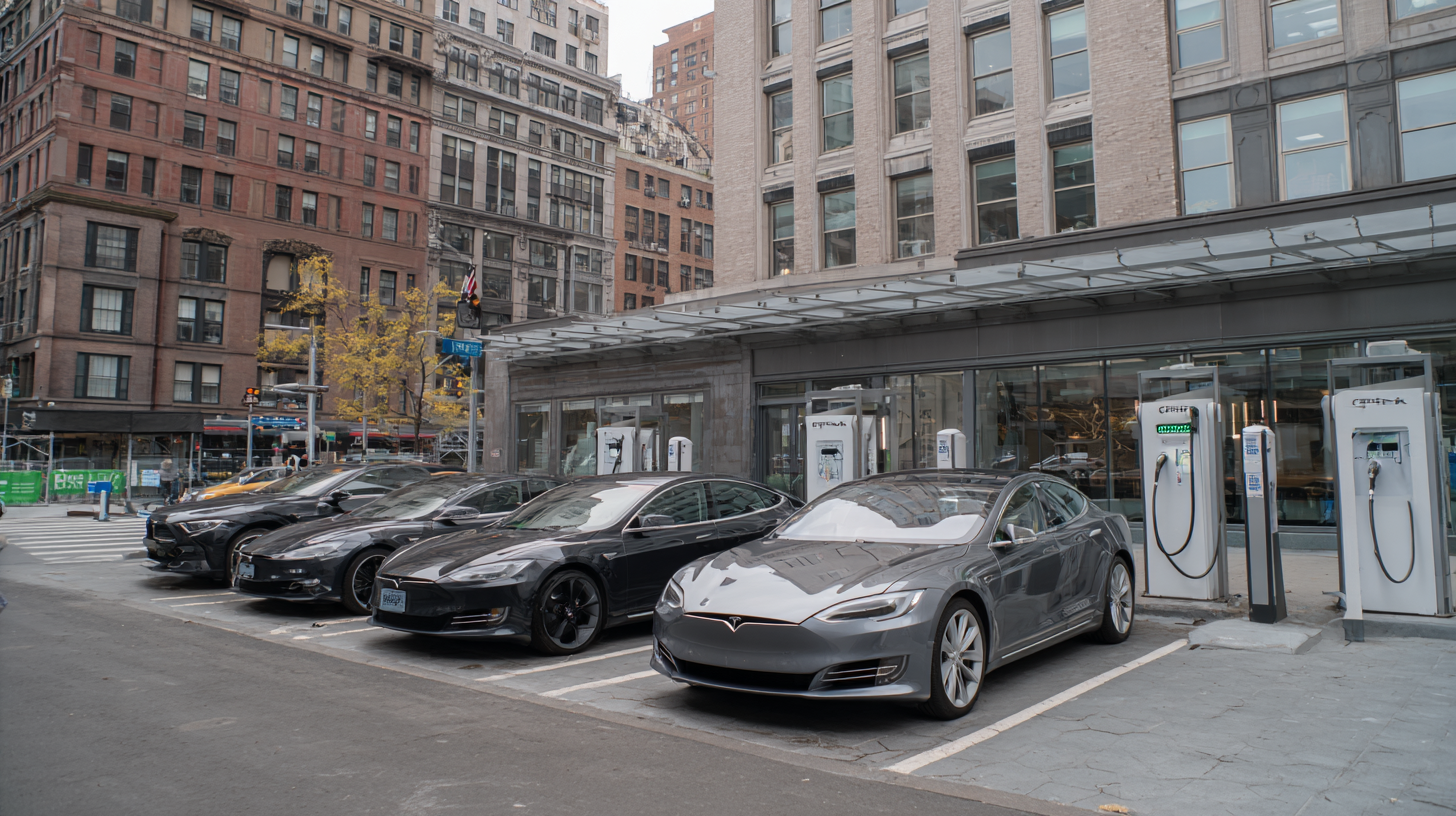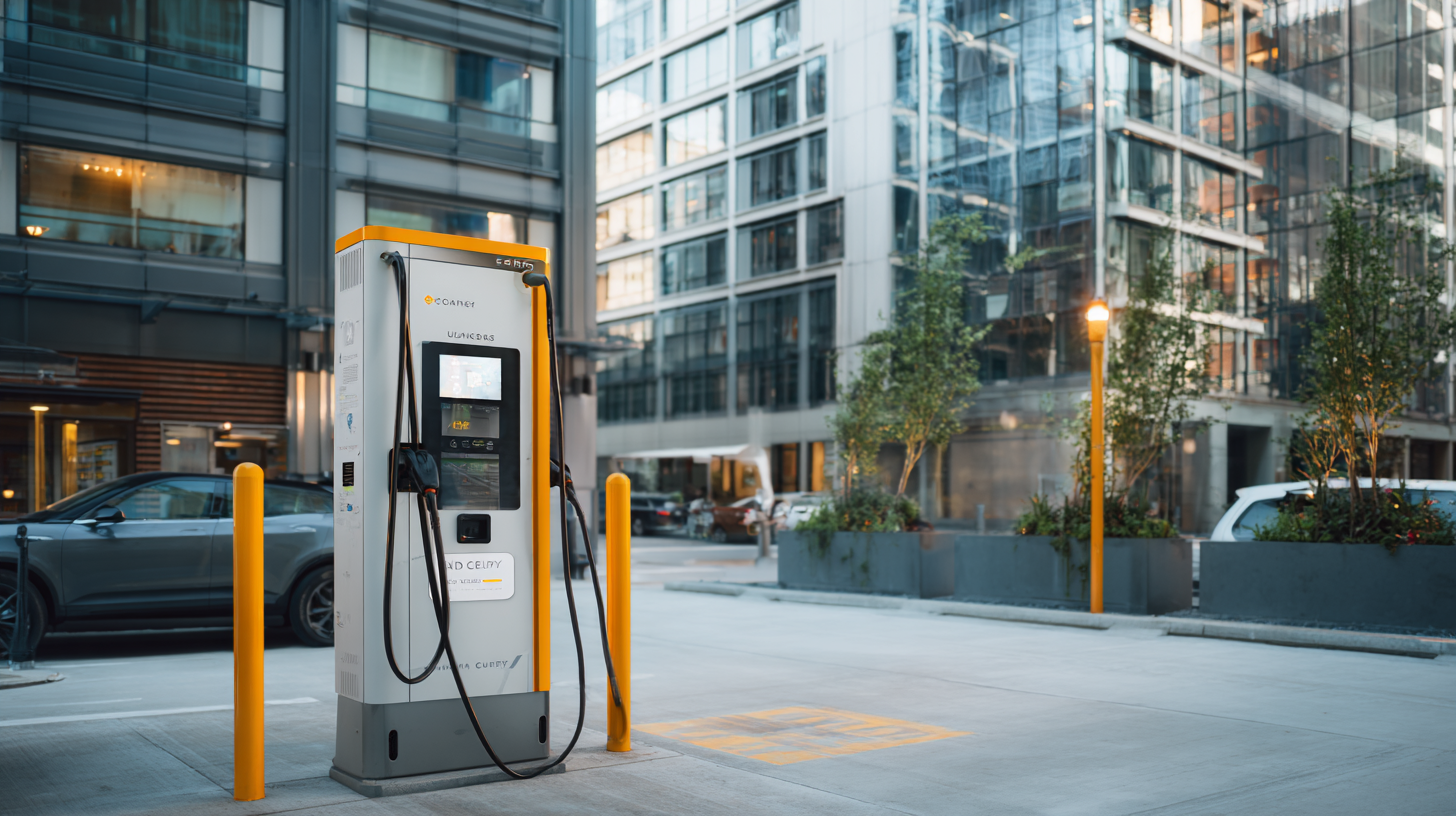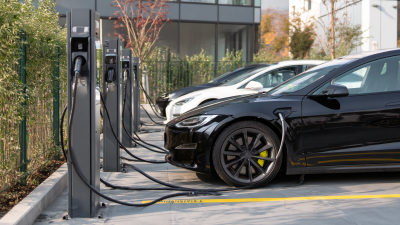Unlocking the Future: How Commercial EV Chargers Transform Urban Transportation
As urban areas continue to face the mounting pressures of population growth and environmental sustainability, the role of Commercial EV Chargers in transforming urban transportation has never been more critical. According to a report by the International Energy Agency, electric vehicles (EVs) are expected to represent 30% of global car sales by 2030, highlighting an urgent need for robust charging infrastructure. Furthermore, a study by McKinsey & Company suggests that the expansion of commercial EV charging networks could reduce greenhouse gas emissions by approximately 1.5 billion tons annually by 2030. This shift not only supports the transition to cleaner mobility but also encourages economic growth, with the U.S. Department of Energy estimating that every public charging station creates about 10 jobs. Therefore, investing in Commercial EV Chargers is not merely a technological upgrade; it is a strategic imperative for cities aiming to accommodate electric vehicles while fostering sustainable and efficient urban transport systems.

The Rise of Commercial EV Chargers and Their Impact on Urban Mobility
As cities continue to grow and evolve, the rise of commercial electric vehicle (EV) chargers is playing a crucial role in reshaping urban mobility. With increasing environmental awareness and government incentives promoting electric vehicles, the installation of commercial chargers is becoming more widespread. This expansion provides drivers with the confidence to transition to electric vehicles, knowing that they have access to necessary charging infrastructure.
Furthermore, the integration of commercial EV chargers aligns with the goals of sustainable urban transportation. By facilitating the use of electric fleets in public transit systems and logistics, cities can see reductions in greenhouse gas emissions and improved air quality. This transformation not only encourages the adoption of clean energy solutions but also redefines the dynamics of urban transportation, making it more efficient and accessible for everyone. The ripple effects of this shift can lead to enhanced mobility options and the potential for innovative transportation solutions, creating a more interconnected urban environment.
Key Benefits of Implementing Commercial EV Charging Infrastructure
The implementation of commercial EV charging infrastructure brings numerous key benefits that significantly enhance urban transportation dynamics. Firstly, it promotes the adoption of electric vehicles (EVs) by alleviating range anxiety among users. With strategically placed charging stations in commercial areas, drivers are more likely to switch from traditional fossil-fuel vehicles to electric ones, knowing they can easily recharge during their daily routines. This facilitates a gradual transition towards a more sustainable urban transport system.
Secondly, commercial EV chargers can stimulate local economies. As more EV users visit these charging stations, local businesses benefit from increased foot traffic. Restaurants, shops, and offices located near charging facilities can see a rise in patronage, ultimately supporting job creation and economic growth in urban areas. Additionally, this infrastructure helps cities meet environmental targets by reducing greenhouse gas emissions, contributing to cleaner air, and enhancing overall quality of life for residents. Overall, commercial EV charging stations are instrumental in crafting the future of urban mobility, offering both practical advantages and broader economic benefits.

Challenges in Expanding Commercial EV Charging Networks in Cities
The expansion of commercial EV charging networks in urban environments faces significant challenges despite the accelerating shift toward electric vehicles. According to a report by the International Energy Agency (IEA), global electric vehicle sales doubled in 2021, reaching a record 6.6 million units. However, the charging infrastructure has not kept pace with this growth. For every EV on the road, there are approximately 3.5 charging points, indicating a pressing need for cities to enhance their commercial charging capabilities.
One of the primary difficulties cities encounter is the high cost associated with installing charging stations. A study by the Electric Power Research Institute (EPRI) indicates that the average cost of deploying a commercial EV charger can range from $5,000 to $50,000, influenced by factors such as location, installation complexity, and grid connection requirements. Furthermore, urban areas often face space constraints, making it challenging to identify optimal locations for new chargers. This scarcity of infrastructure can deter potential EV owners and slow overall adoption, ultimately impacting urban air quality and sustainability targets.
Urban Commercial EV Charging Stations Growth (2020-2023)
This chart illustrates the growth in the number of commercial EV charging stations in urban areas from 2020 to 2023.
The Role of Policy and Regulations in Promoting EV Adoption
The transformation of urban transportation is significantly influenced by policy and regulations that promote the adoption of electric vehicles (EVs). In 2023, the UK overtook Germany to become Europe's largest market for battery electric vehicles (BEVs), driven by strict net-zero sales targets that encouraged manufacturers to offer substantial discounts. This shift not only reflects the effectiveness of regulatory frameworks but also underscores the importance of supportive policies in creating a conducive environment for EV adoption.

Moreover, the global EV battery market is projected to grow from $15.15 billion in 2024 to $32.25 billion by 2032, with a compound annual growth rate (CAGR) of 9.9%. Such growth highlights the increasing demand for infrastructure that supports EVs, including commercial chargers, which are essential for urban areas aiming to meet their sustainability goals.
However, contrasting developments are also evident; the proposed early cancellation of tax credits in the United States under the previous administration presents a cautionary tale about the potential setbacks that can arise from policy changes. This dichotomy illustrates that the role of policy in promoting EV adoption is critical, as it can either propel or hinder progress in transforming urban transportation.
Future Innovations in Commercial EV Charging Technology and Urban Transport
The rapid expansion of the global electric vehicle (EV) market, projected to surge from $74.66 billion in 2025 to $565.58 billion by 2032, indicates a significant transformation in urban transportation driven by innovative commercial EV charging technologies. This growth, with a compound annual growth rate of 33.50%, suggests that stakeholders in the transport sector are increasingly prioritizing sustainable solutions. As cities evolve, commercial EV chargers are becoming pivotal in facilitating the transition to electric mobility, thereby reducing greenhouse gas emissions and fostering cleaner urban environments.
Upcoming events such as the 2025 Shanghai International Auto Show highlight the merging of traditional ground transport with groundbreaking aerial innovations like eVTOL (electric vertical takeoff and landing) vehicles and flying cars. This integration of different modes of transport showcases a visionary approach to urban mobility, positioning cities as experimental grounds for low-altitude economies. Moreover, conferences focusing on the convergence of transportation and energy further elucidate the path towards achieving dual carbon goals, emphasizing technological advancements that support a sustainable future in urban environments.
Unlocking the Future: How Commercial EV Chargers Transform Urban Transportation
| Charging Location | Number of Chargers | Charging Speed (kW) | Average Usage (hours/day) | Emissions Reduced (kg CO2/year) |
|---|---|---|---|---|
| Public Parking Lots | 150 | 22 | 4 | 300,000 |
| Shopping Malls | 100 | 50 | 6 | 200,000 |
| Office Buildings | 75 | 10 | 8 | 150,000 |
| Airports | 50 | 150 | 10 | 400,000 |
| Hospitals | 30 | 22 | 5 | 120,000 |
Related Posts
-

Ultimate Guide to Choosing the Best Charging Station for Your Devices
-

Unlocking the Potential of Best Electric Charging Stations Through 7 Real World Applications
-

China's Resilient Growth in EV Charging Point Installation Amid US China Tariff Challenges
-

Top 10 Car Charging Station Manufacturers in China at the 137th Canton Fair
-

The Future of Sustainable Home Car Charging Points: Innovating for Tomorrow's Eco-Driven Journeys
-

Exploring Alternative Solutions to Best Home Charging Points for Electric Vehicle Owners
